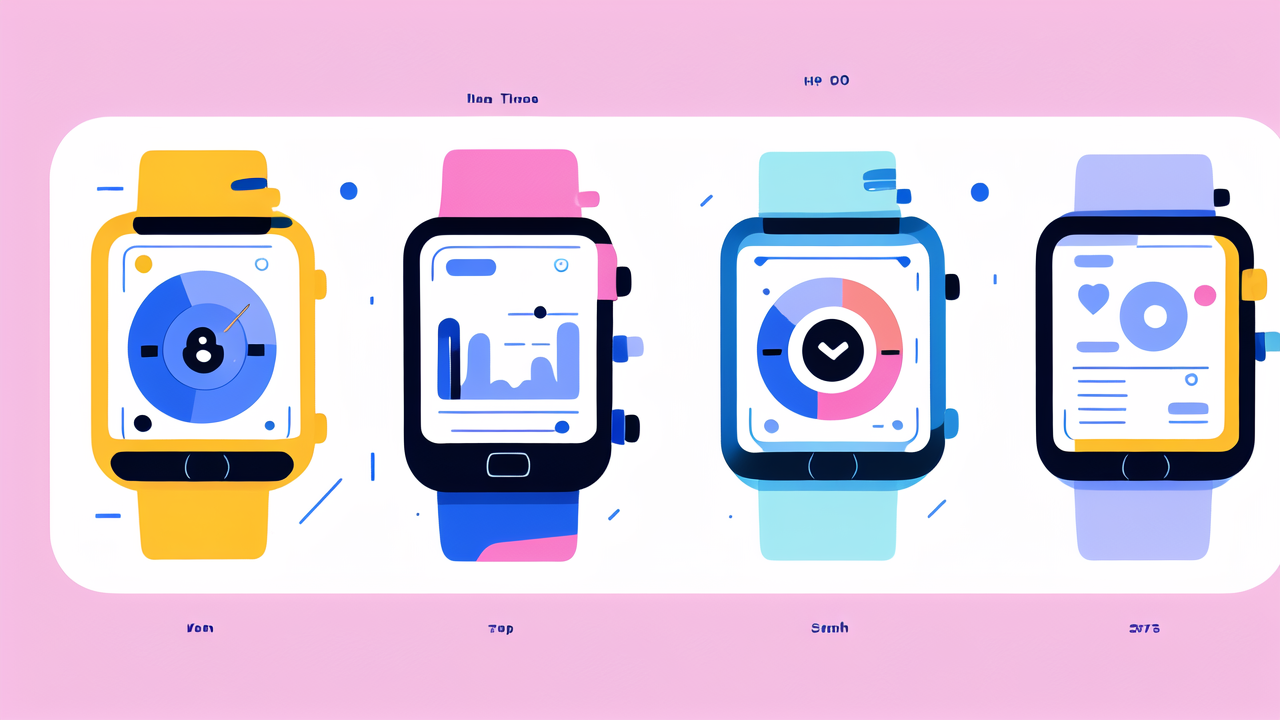Understanding the Wearable Tech Market Shifts
Historical Milestones in Watch Technology
The journey of wearable technology is fascinating. It began with simple timepieces and evolved into smart devices. Early watches were mechanical marvels, relying on intricate gears and springs. The 1970s saw the rise of digital watches, revolutionizing timekeeping. Casio and Timex led this digital revolution, making watches more accessible and feature-rich.

The 1980s brought calculator watches, adding functionality beyond timekeeping. The 1990s saw the first attempts at smart watches, though these were bulky and limited. The 2000s marked a turning point with the introduction of fitness trackers. These devices paved the way for modern smart watches, combining health tracking with communication features.
Current State of the Wearable Tech Industry
Today, the wearable tech industry is booming. Smart watches dominate the market, offering a range of features. These include fitness tracking, heart rate monitoring, and mobile payments. Apple, Samsung, and Fitbit are major players in this space. The industry has expanded beyond watches to include smart rings, glasses, and clothing.
Fitness trackers remain popular, evolving to offer more accurate data. Health monitoring has become a key focus, with devices tracking sleep, stress, and even blood oxygen levels. The integration of AI and machine learning is enhancing the capabilities of these devices. They can now provide personalized insights and recommendations based on user data.
Predicting Future Trends in Wearable Devices
The future of wearables looks promising and diverse. We can expect to see more integration with AI and IoT devices. Smart clothing may become mainstream, with sensors woven directly into fabrics. These could monitor vital signs and adjust temperature. Augmented reality glasses might replace smartphones for many tasks.
Health monitoring will likely become more advanced. Wearables may detect early signs of diseases or monitor chronic conditions. Battery life and charging technology will improve, making devices more convenient. We may see a shift towards more sustainable materials and production methods. Privacy and data security will remain crucial concerns as these devices collect more personal information.
Analyzing Consumer Behavior: The Demand for Smart Watches
The Rise of Health-Conscious Consumers and Fitness Wearables
Health awareness has fueled the demand for fitness wearables. Consumers now seek devices that track steps, calories, and workouts. Heart rate monitoring and sleep tracking have become standard features. These devices appeal to people looking to improve their overall wellness.

Fitness enthusiasts use wearables to optimize their training routines. The data provided helps them set goals and track progress. Many insurance companies now offer incentives for using fitness trackers. This has further boosted their popularity among health-conscious consumers.
The Influence of Lifestyle and Fashion on Wearable Choices
Wearable tech is no longer just about function; style matters too. Consumers want devices that complement their personal style. Many brands now offer customizable watch faces and interchangeable bands. This allows users to match their wearables to different outfits or occasions.
Luxury brands have entered the smart watch market, appealing to fashion-conscious consumers. These high-end devices blend traditional watch design with smart features. The ability to seamlessly integrate technology into daily life is a key selling point. Wearables are now seen as lifestyle accessories, not just gadgets.
Analyzing Purchase Drivers for Smart Watches in the United States
In the US, several factors drive smart watch purchases. Health and fitness tracking remain top priorities for many buyers. The convenience of receiving notifications and making payments is also appealing. Integration with smartphones and other devices is a key consideration.
Brand loyalty plays a significant role, especially for Apple and Samsung users. Price is another important factor, with options available at various price points. Battery life and durability are practical concerns that influence buying decisions. The ability to customize and personalize devices also attracts many consumers.
The Role of Fila Watches in the Competitive Landscape
Fila's Market Position and Its Evolution Over Time
Fila, known for sportswear, has a presence in the watch market. Their watches cater to a sporty, fashion-conscious audience. Fila's watches are often more affordable than high-end smart watches. This positions them as an accessible option for budget-conscious consumers.

Over time, Fila has adapted to changing market trends. They've introduced more modern designs and features in their watches. However, Fila hasn't fully entered the smart watch market. Their focus remains on traditional and sports watches. This strategy allows them to maintain their brand identity in the competitive landscape.
Comparing Fila Watches with Smart Watches from Other Brands
Fila watches differ significantly from smart watches in features and pricing. Fila offers basic timekeeping and style at lower price points. Smart watches provide advanced features like health tracking and notifications. The price difference reflects this gap in functionality.
Fila watches appeal to those who prefer simpler, more affordable options. They're suitable for casual wear or sports activities. Smart watches cater to tech-savvy users who want more from their wearables. The choice between them often depends on individual needs and budgets.
Strategic Partnerships and their Impact on Fila's Growth
Partnerships have been crucial for Fila's growth in various markets. In the watch sector, collaborations with designers or athletes can boost appeal. These partnerships help Fila stay relevant in a rapidly changing market. They also allow the brand to explore new design concepts and technologies.
While Fila hasn't made major moves in smart watch technology, partnerships could change this. Collaborating with tech companies might help Fila enter the smart watch market. This could open new opportunities for growth and innovation in their watch line. Strategic partnerships remain a key tool for Fila to adapt and compete in the evolving wearable tech landscape.




Leave a comment
This site is protected by hCaptcha and the hCaptcha Privacy Policy and Terms of Service apply.